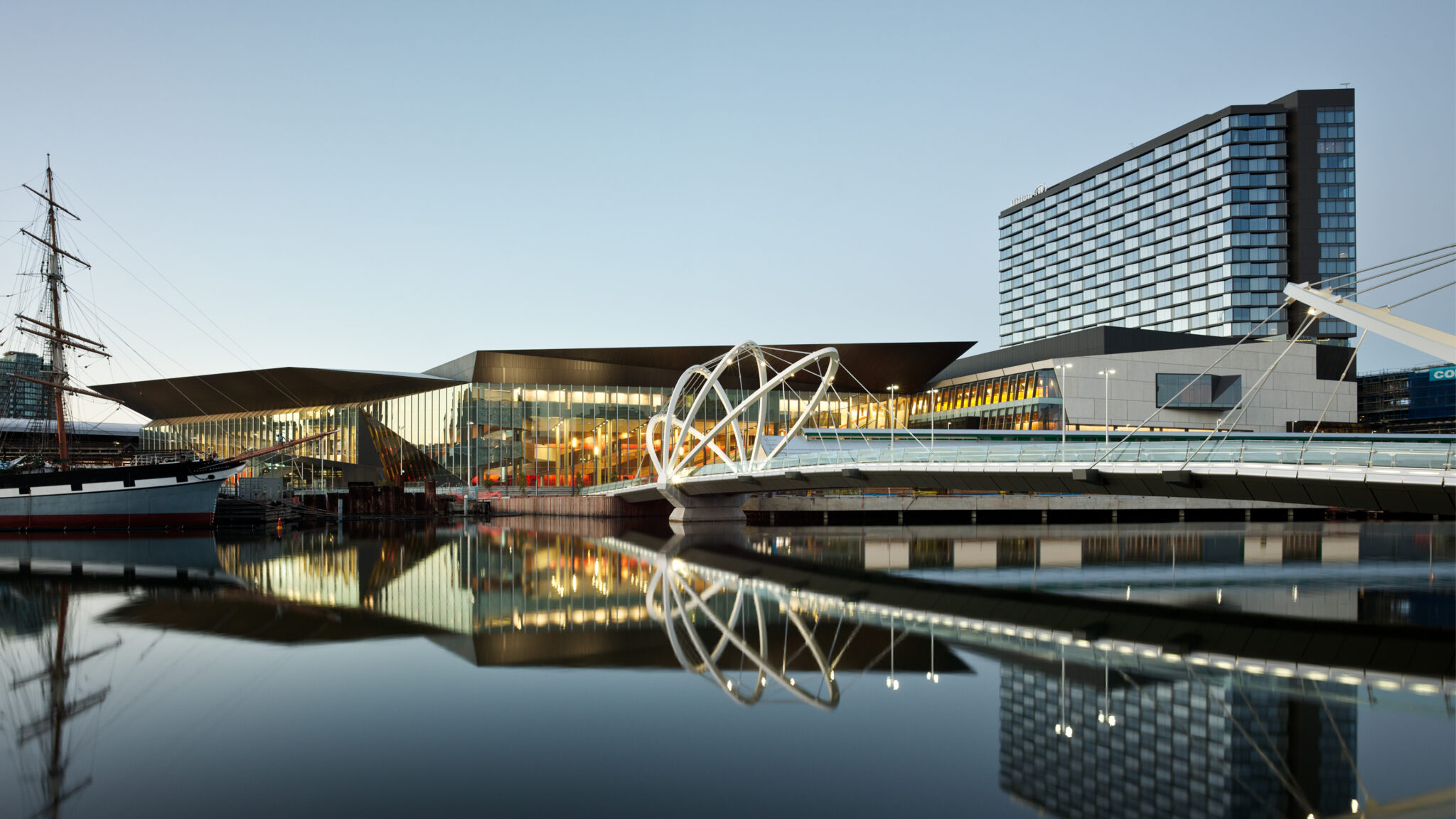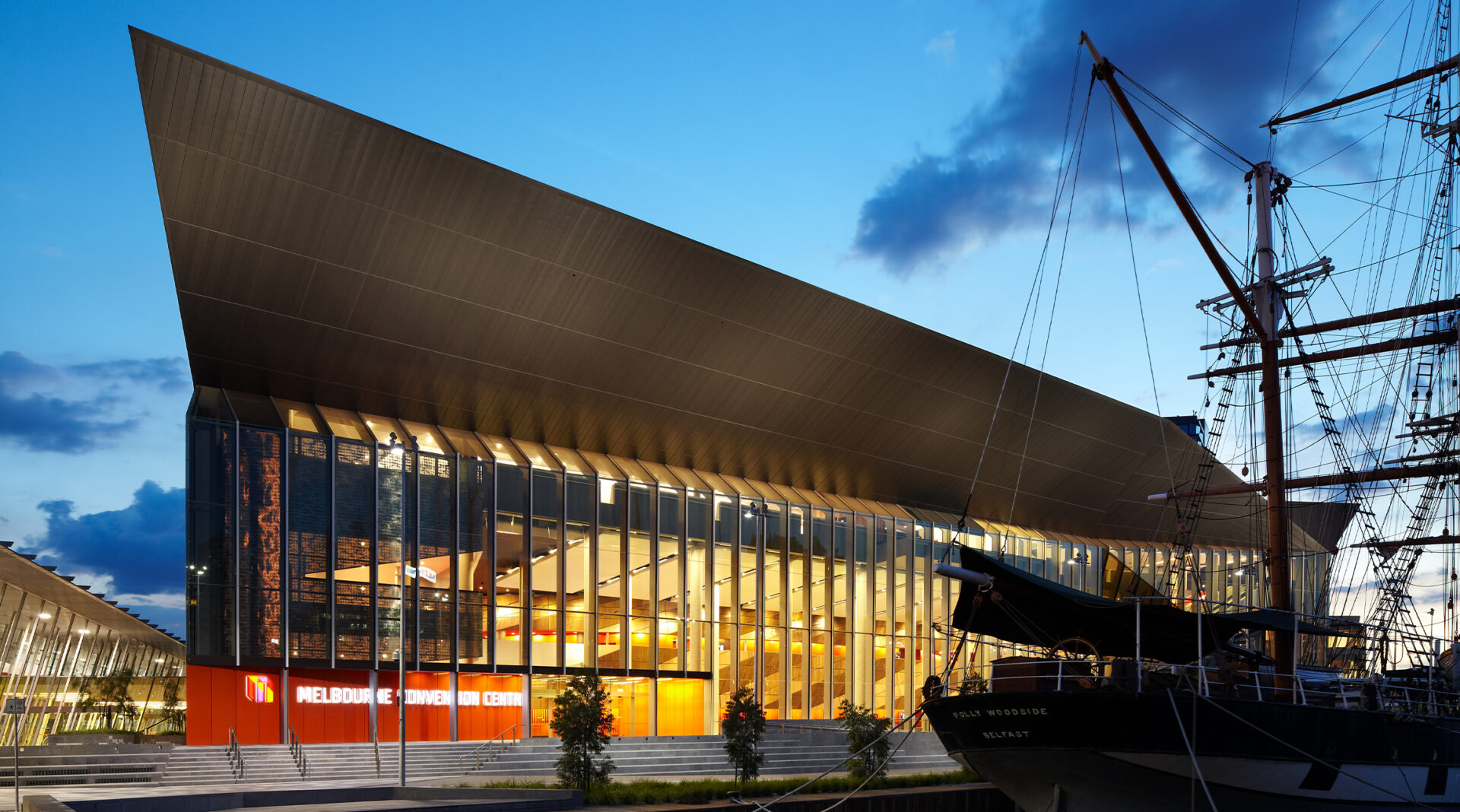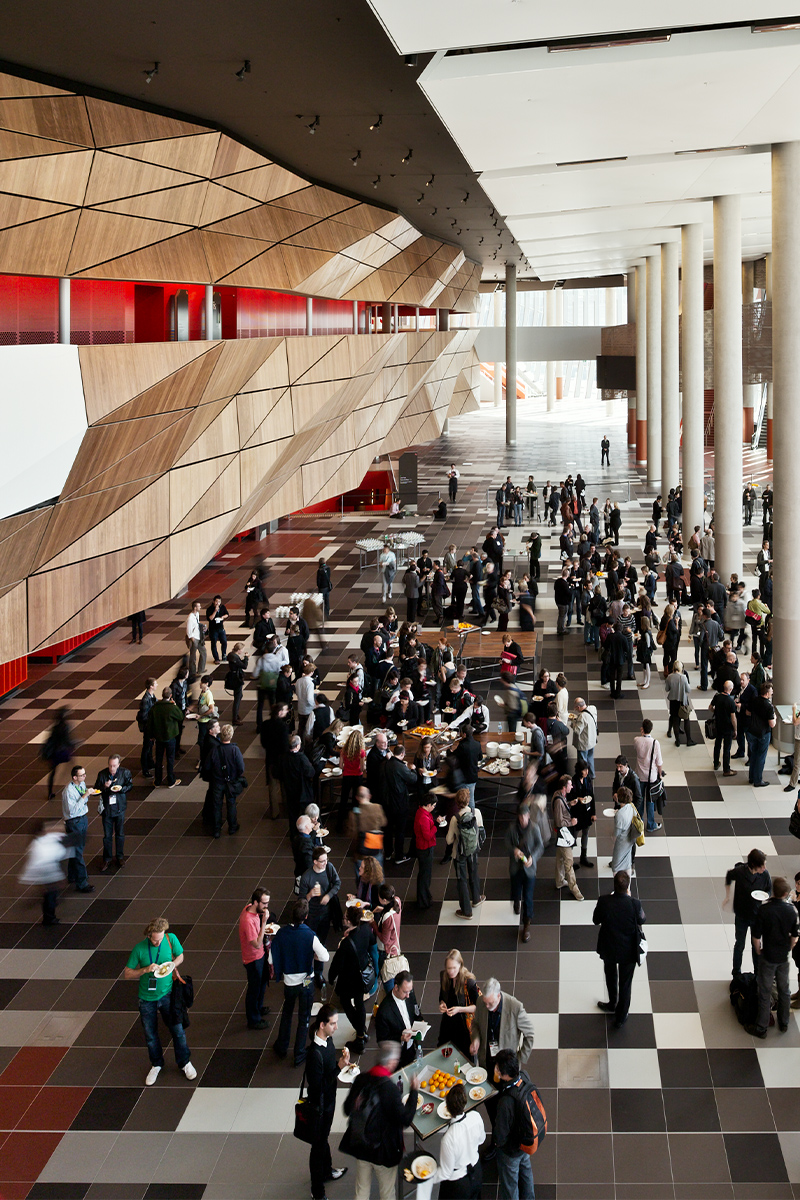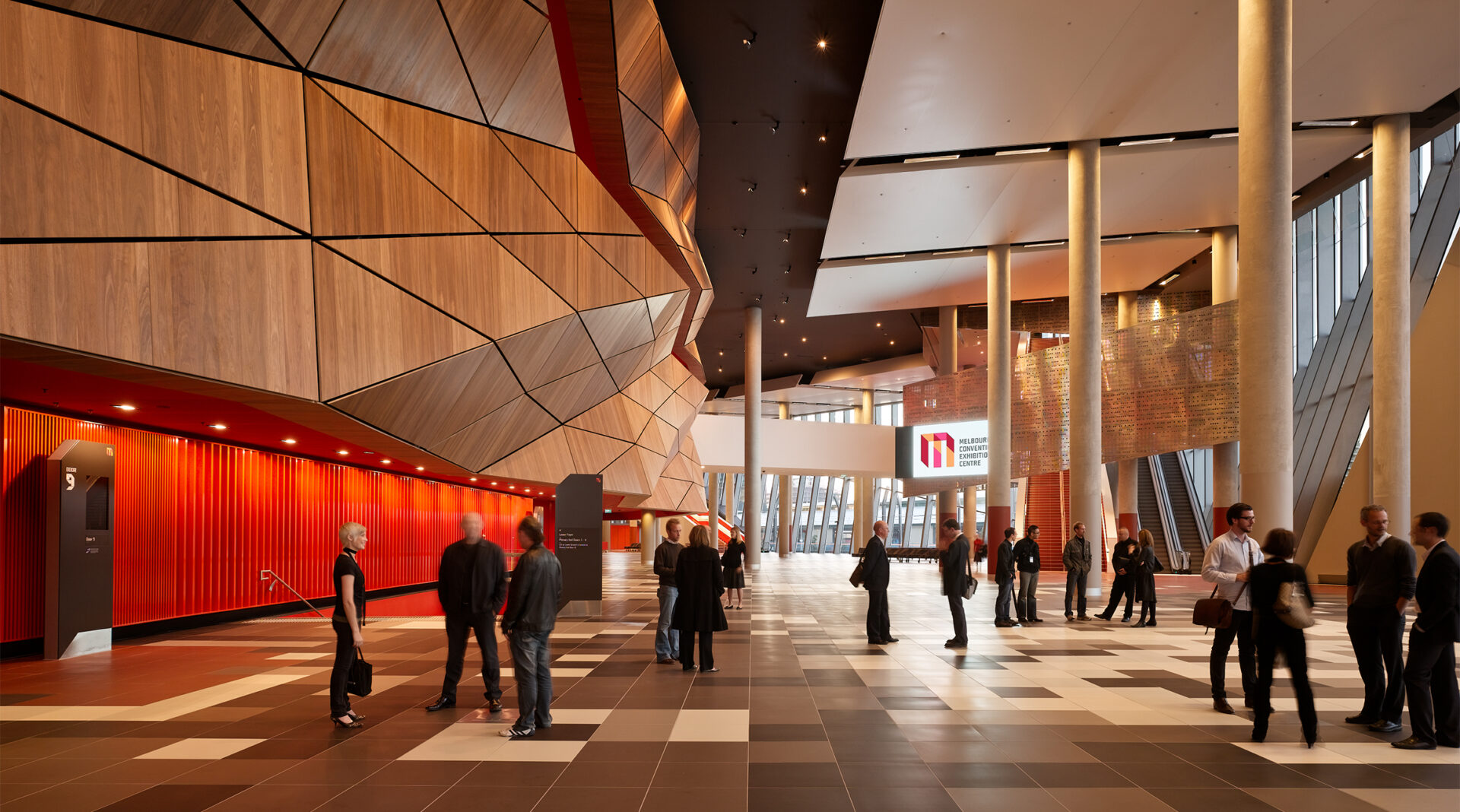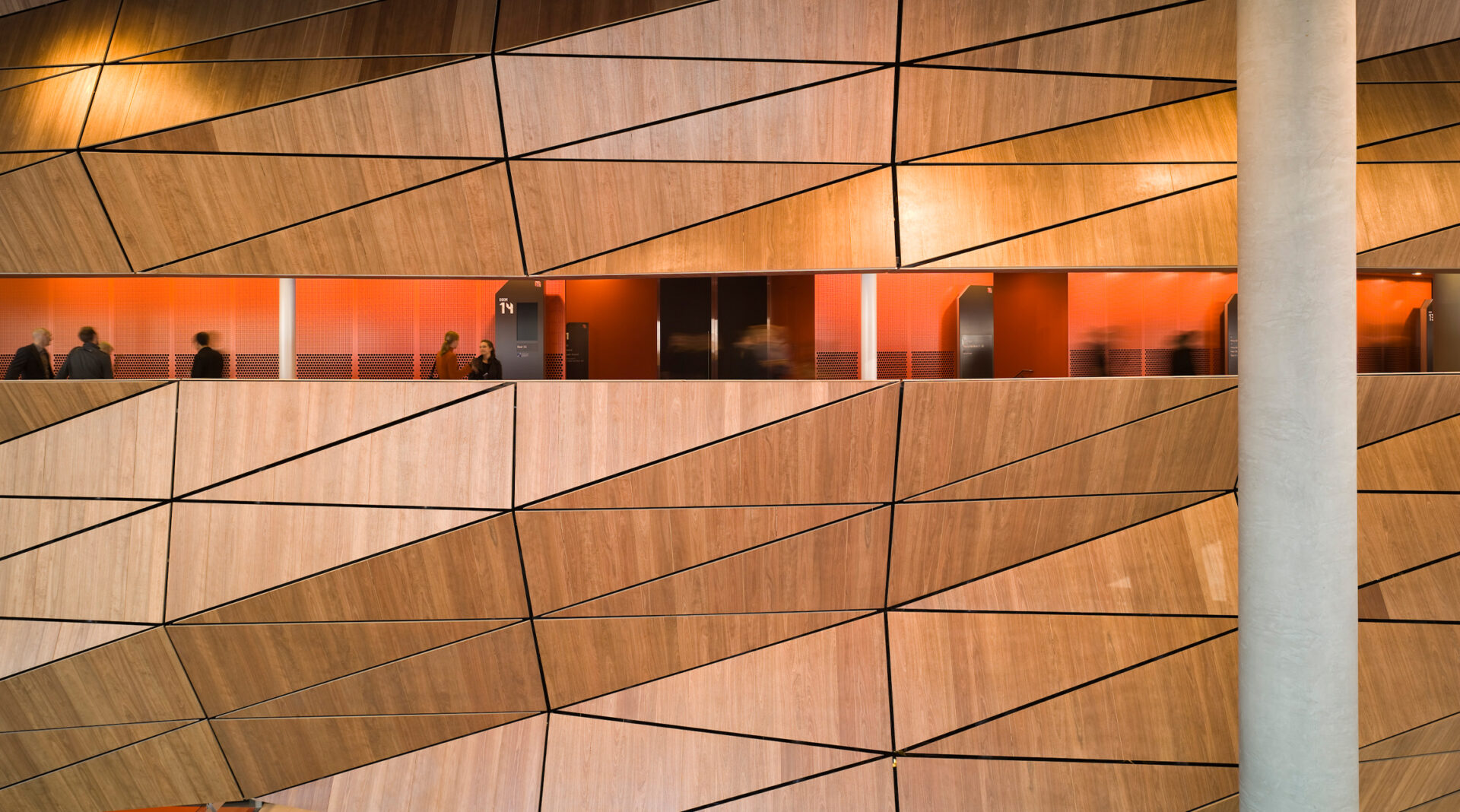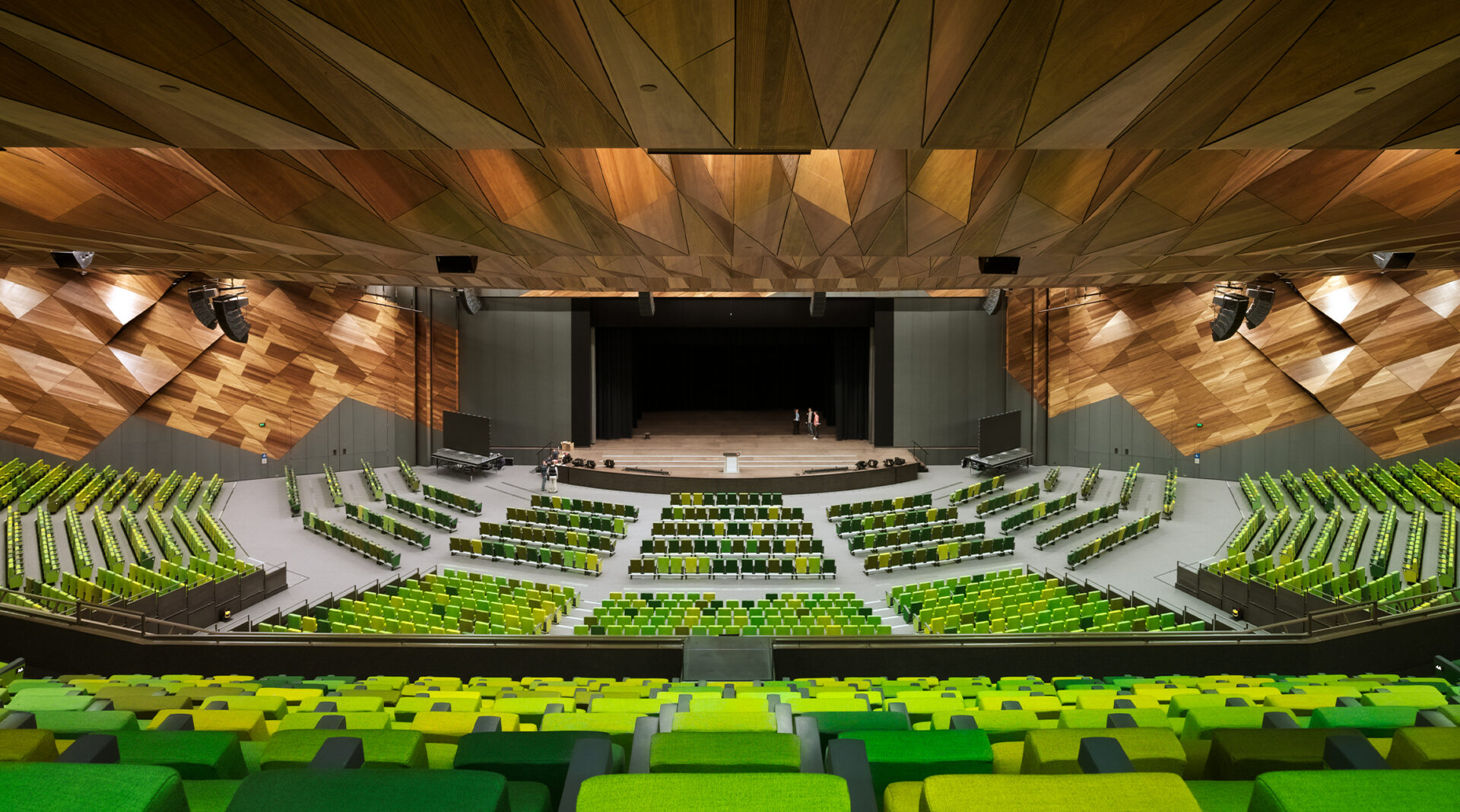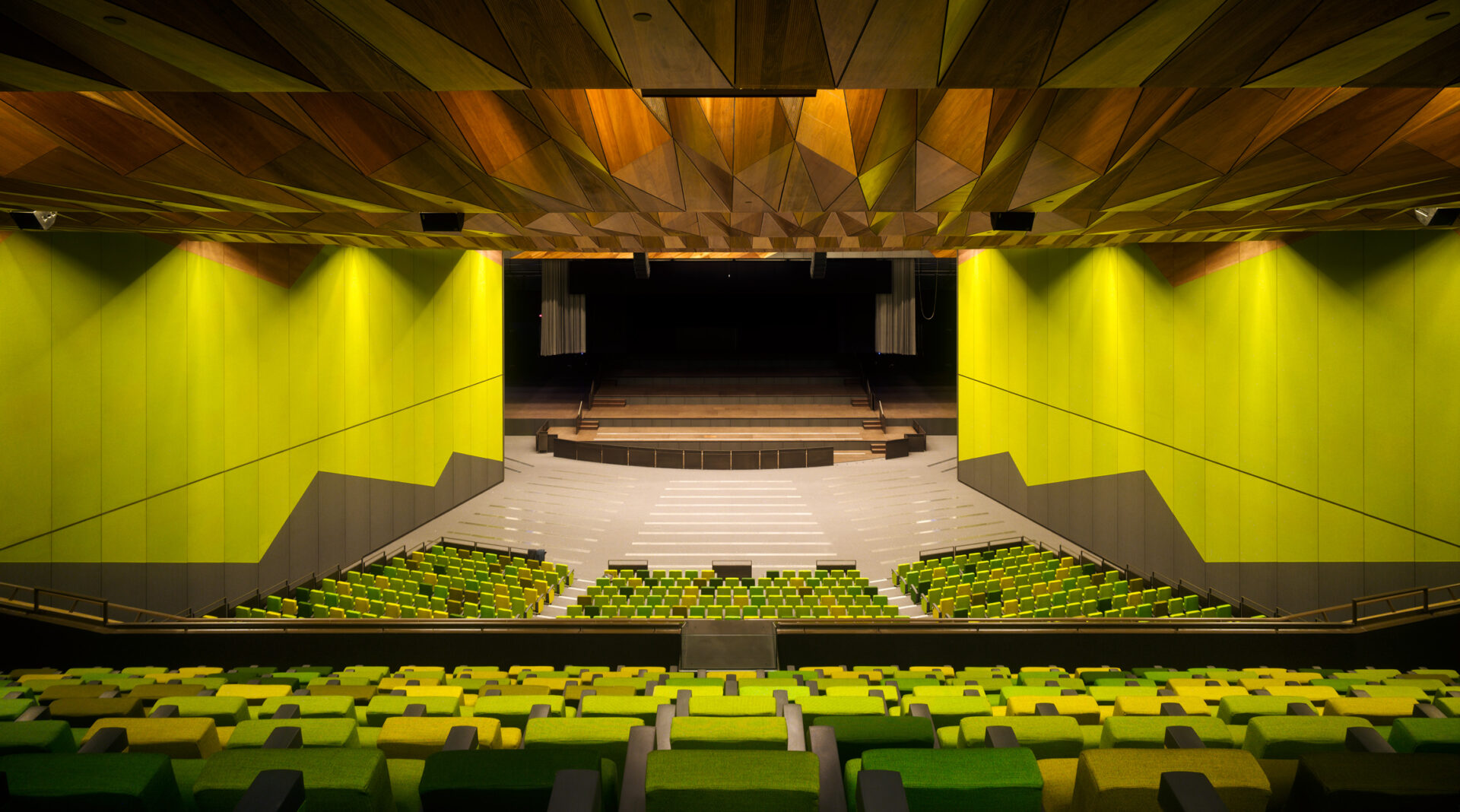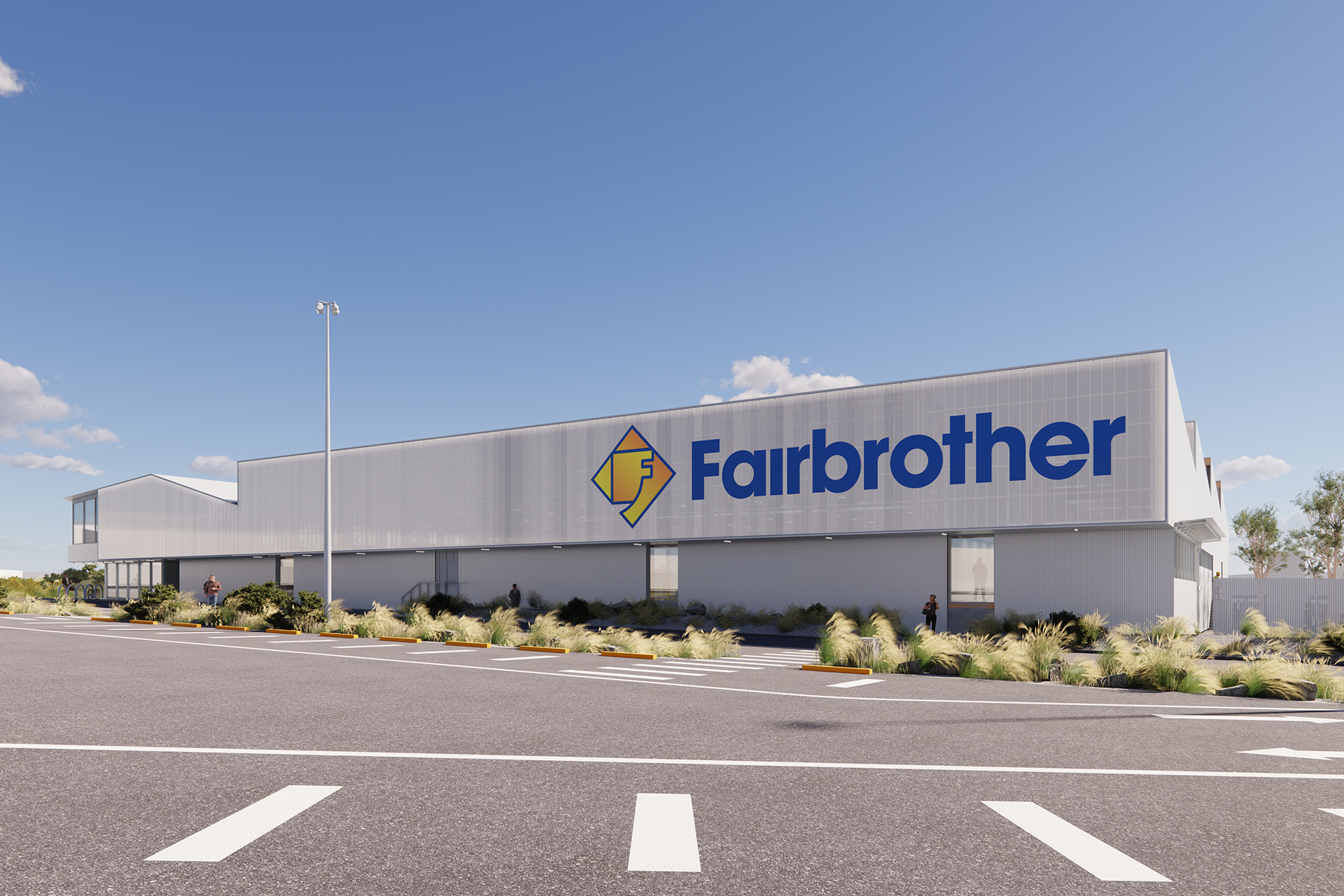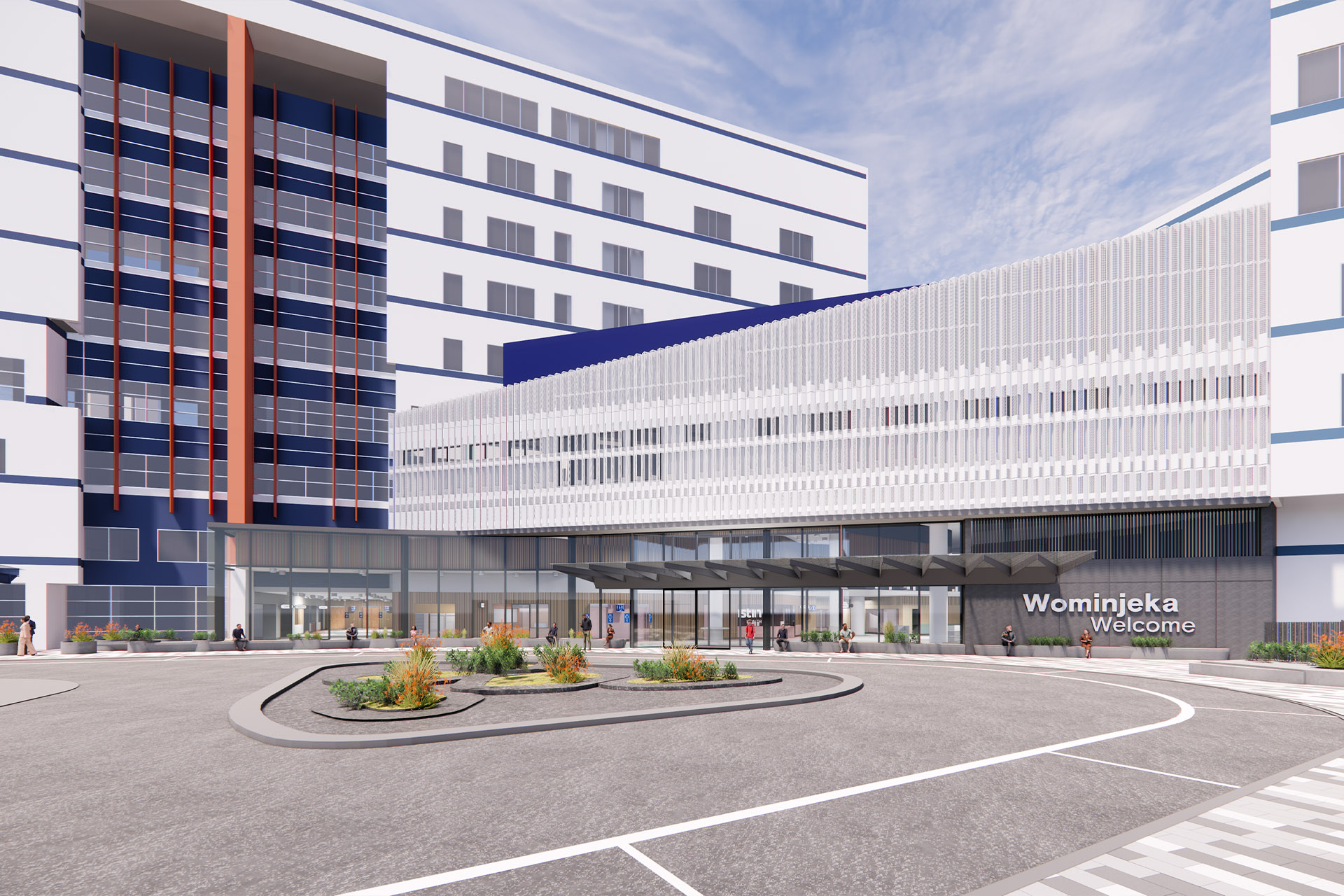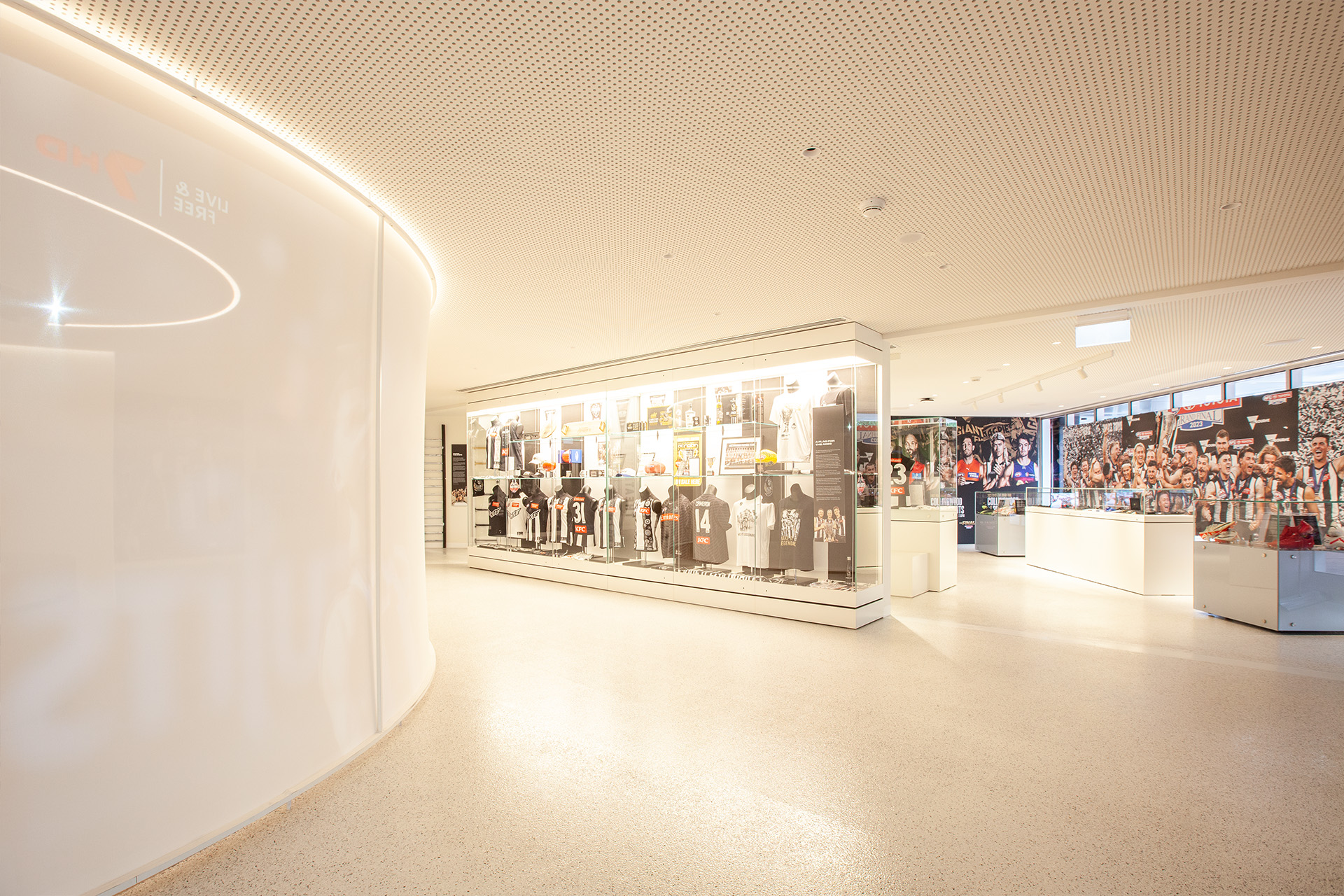NH Architecture, in joint venture with Woods Bagot, aimed to create a public building that belongs to Melbourne, rather than the typical convention centre stereotype, classically akin to a modified sports stadium.
The triangular design of the new Melbourne Convention Centre (MCEC) gives the cityscape a new feature on the banks of the Yarra River. The distinctive 18 metre high glass façade offers passers-by a glimpse into the activity within the centre and creates a foyer full of natural light, as well as offering views out across the Yarra River to the city beyond.
The oblique roof cuts a sharp and defined contour in the skyline, creating an open and transparent space, with direct visual access through the glass frontage. Floor to ceiling glass façade provides a window onto the city, and vice versa, the strong primary colours of the interior are visible from the exterior.
The team also met the challenge of integrating the new Centre with the existing Exhibition Centre, while attempting to create a building with its own distinct identity. The two buildings are linked via an enclosed glass walkway, becoming the largest exhibition and convention facility in the Southern Hemisphere.
The roof is a vast seamless expanse, its exciting geometry makes for spectacular angles and sweeping planes from any vantage point. The total area of the roof is 20,000m2, each side being 200m long.

Ultimately, the team has created an innovative and successful design solution which includes a deluxe hotel with restaurants and cafes, a banquet hall for up to 1,500 diners with a spacious pre-dinner cocktail balcony, 32 meeting rooms, and a ground foyer able to cater for 8,400 guests.
The faceted timber panels of Plenary Hall reflect the textural qualities of the Yarra River’s maritime history. Manufactured from local Victorian spotted gum, the wood veneers were sustainably harvested from only 54 trees. The variegated greens of the auditorium seating creates warmth and intimacy within the large space, whilst offsetting the timber veneers and creating a naturalistic colour palette, which refers to the tree-lined Yarra River.
The design also exceeds the Government’s brief for a 5,000-seat divisible plenary hall. The Gala seating offers maximum flexibility allowing 2 or 3 events to take place concurrently with spaces set up in differing configurations. “It was a complex problem,” says Hamish Lyon of NH Architecture. “We travelled the world and saw 5,000 seat halls and divisible halls but none that combined the two.”

The consistent use of deep reds within the public spaces, is distinctly contrasted to the vibrant greens of Plenary Hall. This signifies a transition from formal to intimate.

The new design inverts the standardised programme of a convention centre. Through positioning the public spaces in a ring around the perimeter, instead of at the building’s central core, circulation paths bordering the cityscape have been created.

This Public Private Partnership project for the Victorian Government is the first convention centre in the world to be awarded a 6 Star Green Star environmental rating.




